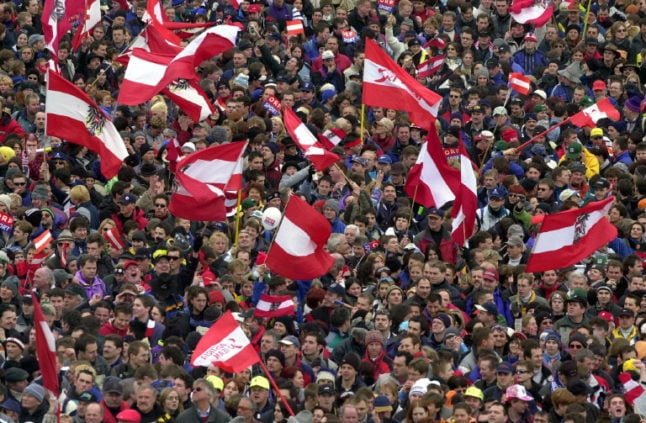The reason Austria has two flags is basically due to its history and subsequent political changes throughout the years.
One is known as the the national flag which represents the country as a whole, and the other referred to as the state flag, which is mainly used for government bodies and agencies.
This division is aid to help provide clarity and distinction between national symbolism such as when Austrian national sports teams represent the country and administrative representation, for example on state buildings or when the representatives of the government are holding talks with other state leaders.
The national flag (Bundesflagge)

The national flag represents the unity and autonomy of Austria, and it is mainly used for official purposes, diplomatic missions, and international events. It consists of three horizontal stripes of red, white, and red and it is one of the oldest national flags in Europe, with roots taking us back to the Middle Ages.
The flag was firstly associated with the Babenberg dynasty who ruled Austria from the 12th to the 13th century and later became a symbol of the Austrian territories within the Roman Empire. When the Roman Empire fell in 1806, the flag was accepted as the national flag of the Austrian Empire and persisted through different historical periods, including the Austro-Hungarian Empire. Following World War I, the flag was readopted as the national flag of the Republic of Austria in 1918.
READ ALSO: How much power do Austria’s state governments hold?
The state flag (Bundesdienstflagge)

The state flag resembles the national flag but includes the Austrian coat of arms in shape of an eagle in the middle. It is used by Austrian federal authorities, government bodies, and state institutions. The coat of arms symbolises Austria’s historical and cultural heritage and presents a golden eagle with a red shield that holds a hook and a hammer, representing labour and agriculture.
The state flag with its coat of arms have been used in Austria since the country regained its independency in 1945 following the end of World War II and the collapse of Nazi Germany. As a part of this regaining independency process, the state flag was adopted to represent the Austrian state and government institutions.
READ NEXT: Who are the new Austrian citizens in 2024?




 Please whitelist us to continue reading.
Please whitelist us to continue reading.
Member comments